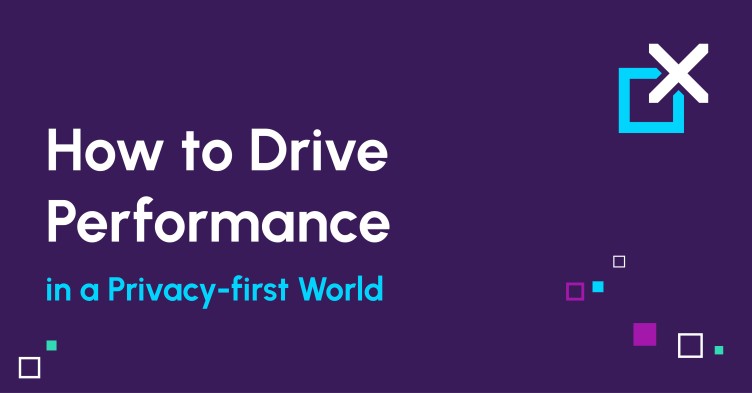We’ve had lots of discussions about cookie deprecation and the move towards privacy-first data – as well as its implications (both opportunities and challenges!) for marketers and advertisers. For those of us working in this space, we know that despite having to now adapt to the changes in the ways in which we gather, analyse and work with audience data, the expectation to deliver against performance targets will remain the same.
It is clear that in order to reap the benefits that 1st party data offers, and achieve business objectives, organisations will need to demonstrate their privacy-first mindset and maturity.
So where do you start? Here we discuss three areas highlighted by Google as actions that will allow organisations to continue to drive results, whilst protecting user privacy.
Build direct relationships with customers
By its very definition, 1st party data is a direct exchange of specific, unique information from your audience to you. One of its key benefits is that it allows you to build and develop personalised relationships with those who have consented to sharing their data with you in a privacy-first way.
As a result, 1st party data holds the highest value of all data types for organisations as it, when used in a privacy-first way, is most likely to deliver the highest ROI. On the flip side, individuals want to see a value exchange in their favour in order to ‘give up’ this information. Marketers and advertisers must therefore understand what their audience perceives as valuable, and include this across touchpoints with the brand (e.g. offers for sign up/newsletter subscription/account creation, tiered loyalty clubs, giveaways or competitions (without having to purchase), whitepapers or free trials for B2B audiences).
By offering this value, combined with being open and transparent about how data is to be used, it creates a snowball effect – the more information an individual is willing to give, the more targeted and personalised future communication and engagement can be, thereby increasing trust in, and alignment with, the brand, leading to sharing of more information, and so on…
It is important to set up a foundation for 1st party data collection from the start – including tools to capture information both online (e.g. site tagging infrastructure) as well as offline (via a robust CRM).
Ensure measurement remains accurate and actionable
Google has acknowledged that the loss of 3rd party data inevitably means “measurement gaps” to begin with. However the benefit of 1st party data (once the foundations of site tagging etc are in place) is that it can potentially measure conversions even more accurately, and deliver better quality of data than 3rd party was able to achieve. Further, better data management is also likely to lead to better efficiencies for future marketing/ad spend.
Additionally measurement modelling via machine learning can fill in these and other gaps and unlock insights (which, together with 1st party data, helps increase campaign performance). Modelling uses observable signals to provide a more complete picture of your performance in a privacy-safe way, even going as far as using advanced machine learning (in Google Marketing Platform and Analytics 4) to determine how each marketing touchpoint contributed to a conversion without compromising user privacy.
Drive performance by being relevant
As we’ve touched on, personalisation is what 1st party data gives to marketers – the ability to create messaging and advertising that is targeted and relevant to the interests and/or needs of prospective and current customers. By leveraging the information gained, organisations can significantly increase their engagement with their audiences and better nurture them through the customer journey.
Whilst 1st party data is unique to the person giving it to you, it can also be utilised to reach new, previously untapped, audiences. For example, with Display and Video 360, data is uploaded and then processed through the targeting tool, Customer Match. Customer Match brings together the unique insights you already have about your customers and, matched against Google users, allows you to deliver highly tailored messages across all of Google’s properties. Customer Match can also increase your prospective customer base with ‘Similar Audiences’ – a cohort generated by Google based on having characteristics and interests similar to your current users, who can then receive their own targeted marketing effort.
Reviewing and future-proofing your tech stack is also key for optimal performance. Investing in automation tools to help collate and manage data from all channels (such as Wondaris, a Customer Data Platform and third-party integrator approved by Google), allows for this process of uploading information to be done simply, securely and accurately.
A CDP is ideal for removing performance inefficiencies in both enterprise-sized organisations with large volumes of data, and smaller marketing teams who just don’t have capacity or the time required for manual uploading of information.
In order to truly drive performance, the privacy-first mindset needs to become embedded in an organisation’s overarching strategy. The more people are able to place their trust in businesses and brands as a whole, based on the way their data is collected and handled – and the value they receive in exchange – the more they are likely to become long-term, loyal customers. Investing in a 1st party data strategy takes time and effort, however it will become your business’ most valuable asset for the future.
To simplify this process, marketers may want to look at tools such as Wondaris Customer Data Platform that are designed to integrate with your current tech stack to help unify, manage and activate first-party data sets in a privacy-safe environment.
For more information on how to design and implement a first-party data strategy download our whitepaper here or book in to speak to a member of the XPON team.
About XPON Technologies
As a full-stack Google Marketing Platform & Google Cloud Partner, XPON Technologies AUNZ can help to make this inevitable transition as painless as possible.
